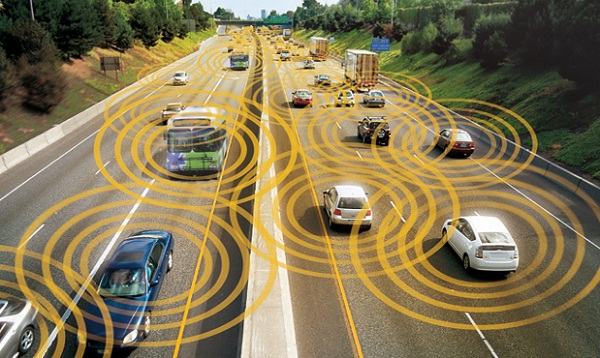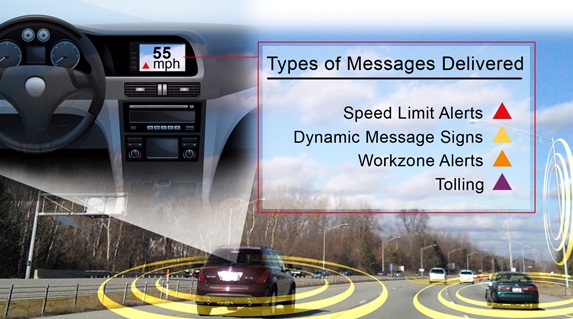It’s not quite the Google car that recently rolled past 300,000 miles of driving itself (Where does it go? What does it do when it gets there?). But the U.S. Department of Transportation is road-testing a safety system that puts vehicles in communication with each other in the hope of reducing crashes.
Transportation Secretary Ray LaHood was in Michigan this week to launch what the department is calling the largest-ever test of connected vehicle crash avoidance technology.

In the program, some 3,000 vehicles in the Ann Arbor area have been equipped with wireless technology for vehicle-to-vehicle, or V2V, communications.
The vehicles are putting to use a band of spectrum allocated way back in 1999 — at the request of the clearly forward-thinking Intelligent Transportation Society of America — for what are known as “dedicated short range communications” systems. In the DOT program, the Wi-Fi-like system “emits a basic safety message 10 times per second that forms the data stream that other in-vehicle devices use to determine when a potential traffic hazard exists.”

This info is used in combination with the vehicle’s own data to provide warnings to drivers about dangerous lane changes, vehicles speeding around blind corners and other potential calamity-causing behaviors.
“Vehicle-to-vehicle communication has the potential to be the ultimate game-changer in roadway safety – but we need to understand how to apply the technology in an effective way in the real world,” National Highway Traffic Safety Administrator David Strickland said in a statement. “NHTSA will use the valuable data from the ‘model deployment’ as it decides if and when these connected vehicle safety technologies should be incorporated into the fleet.”
The road testing, mostly on cars offered up by volunteers, is being conducted by the University of Michigan’s Transportation Research Institute under the Transportation Department’s Safety Pilot initiative. The NHTSA and the Research and Innovative Technologies Administration Intelligent Transportation Systems Joint Programs Office are overseeing the program. The deployment in Michigan is reportedly costing $22 million, with $18 million coming from the federal government.
The department seems to have some solid evidence that there’s a hunger among drivers for such safety systems. In the first phase of the program, a series of six clinics were held around the country beginning last year to test acceptance of various driver-assistance applications, including in-car collision warnings, “do not pass” alerts, warnings that a vehicle ahead has stopped suddenly and other similar safety messages.
According to the department, out of the 700 drivers who participated, around 90 percent said they would like to have the V2V safety features in their own vehicles, believing the technology would be useful in improving driver safety. (Hopefully the drivers’ enthusiasm wasn’t based on the presumption that the safety features will allow them to concentrate more on their smartphones, snacks, makeup or children in the back seat.)